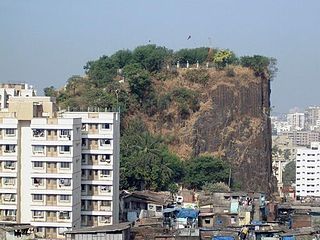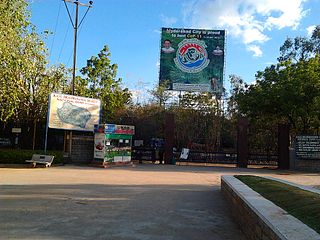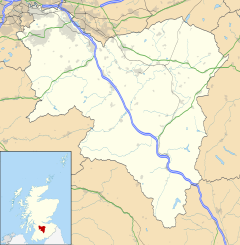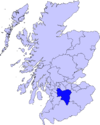
Squirrels are members of the family Sciuridae, a family that includes small or medium-size rodents. The squirrel family includes tree squirrels, ground squirrels, and flying squirrels. Squirrels are indigenous to the Americas, Eurasia, and Africa, and were introduced by humans to Australia. The earliest known fossilized squirrels date from the Eocene epoch, and among other living rodent families, the squirrels are most closely related to the mountain beaver and to the dormice.

Wastewater is generated after the use of fresh water in a variety of applications, and usually involves leaching, flushing, or washing away waste products and nutrients added to the water during these applications. A more detailed definition for wastewater is "Used water from any combination of domestic, industrial, commercial or agricultural activities, surface runoff / storm water, and any sewer inflow or sewer infiltration".
An organ system is a biological system consisting of a group of organs that work together to perform one or more functions. Each organ has a specialized role in a plant or animal body, and is made up of distinct tissues.

Audubon Zoo is an American zoo located in New Orleans, Louisiana. It is part of the Audubon Nature Institute which also manages Audubon Aquarium of the Americas, Audubon Louisiana Nature Center, Freeport-McMoran Species Survival Center, Audubon Park, and Audubon Coastal Wildlife Network. It covers 58 acres (23 ha) and is home to over 2,000 animals. It is located in a section of Audubon Park in Uptown New Orleans, on the Mississippi River side of Magazine Street. The zoo and park are named in honor of artist and naturalist John James Audubon who lived in New Orleans starting in 1821.

Gilbert Hill is a 200 ft (61 m) monolith column of black basalt rock at Andheri, in Mumbai, India. The rock has a sheer vertical face and was formed when molten lava was squeezed out of the Earth's clefts during the Mesozoic Era about 66 million years ago. During that era, molten lava had spread around most of the Indian states of Maharashtra, Gujarat and Madhya Pradesh, covering an area of 50,000 square kilometres (19,000 sq mi). The volcanic eruptions were also responsible for the destruction of plant and animal life during that era. According to experts, this rare geological phenomenon was the remnant of a ridge and had clusters of vertical columns in nearby Jogeshwari which were quarried off two decades ago. These vertical columns are similar to the Devils Tower National Monument in Wyoming, and the Devils Postpile National Monument in eastern California, USA. Gilbert Hill was declared a National Park in 1952 by the Central Government under the Forest Act. In 2007, after years of lobbying by geologists, the hill was declared a Grade II heritage structure by the Municipal Corporation of Greater Mumbai (MCGM), and all quarrying and other activities around the monument were prohibited. Over the period of time, Gilbert Hill has faced severe erosion problems too.

A geoglyph is a large design or motif produced on the ground by durable elements of the landscape, such as stones, stone fragments, gravel, or earth. A positive geoglyph is formed by the arrangement and alignment of materials on the ground in a manner akin to petroforms, while a negative geoglyph is formed by removing part of the natural ground surface to create differently coloured or textured ground in a manner akin to petroglyphs.

Lion's Head is a mountain in Cape Town, South Africa, between Table Mountain and Signal Hill. Lion's Head peaks at 669 metres (2,195 ft) above sea level. The peak forms part of a dramatic backdrop to the city of Cape Town and is part of the Table Mountain National Park.

The southern cassowary, also known as double-wattled cassowary, Australian cassowary or two-wattled cassowary, is a large flightless black bird. It is one of the three living species of cassowary, alongside the dwarf cassowary and the northern cassowary. It is a ratite and therefore related to the emu, ostriches, rheas and kiwis.

Fantastic Mr Fox is a children's novel written by British author Roald Dahl. It was published in 1970, by George Allen & Unwin in the UK and Alfred A. Knopf in the U.S., with illustrations by Donald Chaffin. The first U.K. Puffin paperback, first issued in 1974, featured illustrations by Jill Bennett. Later editions have featured illustrations by Tony Ross (1988) and Quentin Blake (1996). The story is about Mr Fox and how he outwits his farmer neighbours to steal their food from right under their noses. In 2009, it was adapted into a stop-motion animated film by Wes Anderson.

Horse training refers to a variety of practices that teach horses to perform certain behaviors when commanded to do so by humans. Horses are trained to be manageable by humans for everyday care as well as for equestrian activities from horse racing to therapeutic horseback riding for people with disabilities.

Kasu Brahmananda Reddy National Park is a national park located in Jubilee Hills and Banjara Hills in Hyderabad, Telangana, India. The park has an approximate area of 390-acre (1.6 km2). The entire palace complex is spread over an area of 400 acres and was given to Prince Mukarram Jah on his coronation by his father Prince Azam Jah in 1967. It was declared as a National park by the Andhra Pradesh state government after getting approval from the central government in the year 1998. It is located centrally in Jubilee Hills and is described as a jungle amidst the concrete jungle.The Eco sensitive zone was declared on 27 October 2020 by Govt. of India

The Tsodilo Hills are a UNESCO World Heritage Site (WHS), consisting of rock art, rock shelters, depressions, and caves in southern Africa. It gained its WHS listing in 2001 because of its unique religious and spiritual significance to local peoples, as well as its unique record of human settlement over many millennia. UNESCO estimates there are over 4500 rock paintings at the site. The site consists of a few main hills known as the Child Hill, Female Hill, and Male Hill.

The Arctic ground squirrel is a species of ground squirrel native to the Arctic and Subarctic of North America and Asia. People in Alaska, particularly around the Aleutians, refer to them as "parka" squirrels, most likely because their pelt is good for the ruff on parkas and for clothing.

Gugh could be described as the sixth inhabited island of the Isles of Scilly, but is usually included with St Agnes with which it is joined by a sandy tombolo known as "The Bar" when exposed at low tide. The island is only about 1 km (0.62 mi) long and about 0.5 km (0.31 mi) wide, with the highest point, Kittern Hill at 34 m (112 ft). The geology consists of Hercynian granite with shallow podzolic soils on the higher ground and deeper sandy soils on the lower ground. The former Gugh farm is just north of the neck across the middle of the island between the two hills. The two houses were designed and built in the 1920s by Charles Hamlet Cooper. The name is often mispronounced as "Goo", "Guff" or even "Gogh".

Biology is the scientific study of life. It is a natural science with a broad scope but has several unifying themes that tie it together as a single, coherent field. For instance, all organisms are made up of cells that process hereditary information encoded in genes, which can be transmitted to future generations. Another major theme is evolution, which explains the unity and diversity of life. Energy processing is also important to life as it allows organisms to move, grow, and reproduce. Finally, all organisms are able to regulate their own internal environments.

Dhosi Hill is an extinct volcano, standing alone at the north-west end of the Aravalli mountain range, of which it is a part, with height varying from about 345 to 470 meters from the surrounding land and 740 meters from the sea level. It has temple, pond, fort and caves on the top and forest around it. The Aravalli range is a Precambrian Malani igneous suite of rocks that have been dated at 732 Ma BP.

Hill farming is extensive farming in upland areas, primarily rearing sheep, although historically cattle were often reared extensively in upland areas. Fell farming is the farming of fells, a fell being an area of uncultivated high ground used as common grazing. It is a term commonly used in Northern England, especially in the Lake District and the Pennine Dales. Elsewhere, the terms hill farming or pastoral farming are more commonly used.

Odisha, one of the 28 states of India, has two basic kinds of forest: in the northeast region of the state the forest is classified as the tropical-moist-deciduous type, blanketing hills, plateaus and other high-altitude isolated areas; in the southwest the tropical-dry-deciduous variety dominate.
Do Animals Have Rights? is a 2005 non-fiction book on animal rights by British philosopher Alison Hills from the University of Bristol. The book explores the ethics of factory farming, animal experimentation and other issues involving animals from a philosophical analysis.

Windmill Hill Cavern is a limestone cave system in the town of Brixham, Devon. It was discovered in 1858 and later excavated by a team led by the geologist William Pengelly, who found proof that humans co-existed with extinct British fauna.



















